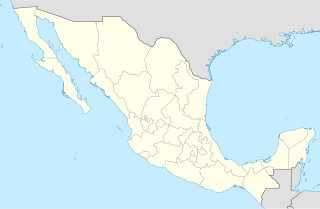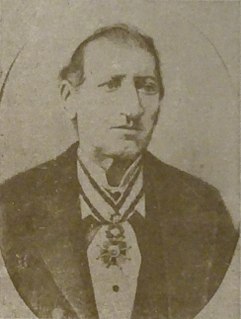See also
| This article includes a list of ships with the same or similar names. If an internal link for a specific ship led you here, you may wish to change the link to point directly to the intended ship article, if one exists. |
Orilla is the name of a number of ships, including:
| This article includes a list of ships with the same or similar names. If an internal link for a specific ship led you here, you may wish to change the link to point directly to the intended ship article, if one exists. |

A steamship, often referred to as a steamer, is a type of steam-powered vessel, typically ocean-faring and seaworthy, that is propelled by one or more steam engines that typically move (turn) propellers or paddlewheels. The first steamships came into practical usage during the early 1800s; however, there were exceptions that came before. Steamships usually use the prefix designations of "PS" for paddle steamer or "SS" for screw steamer. As paddle steamers became less common, "SS" is assumed by many to stand for "steamship". Ships powered by internal combustion engines use a prefix such as "MV" for motor vessel, so it is not correct to use "SS" for most modern vessels.

A ballistic missile submarine is a submarine capable of deploying submarine-launched ballistic missiles (SLBMs) with nuclear warheads. The United States Navy's hull classification symbols for ballistic missile submarines are SSB and SSBN – the SS denotes submarine, the B denotes ballistic missile, and the N denotes that the submarine is nuclear powered. These submarines became a major weapon system in the Cold War because of their nuclear deterrence capability. They can fire missiles thousands of kilometers from their targets, and acoustic quieting makes them difficult to detect, thus making them a survivable deterrent in the event of a first strike and a key element of the mutual assured destruction policy of nuclear deterrence.

An ocean liner is a passenger ship primarily used as a form of transportation across seas or oceans. Liners may also carry cargo or mail, and may sometimes be used for other purposes.

SS Europa, later SS Liberté, IMO 5607332, was a German ocean liner built for the Norddeutsche Lloyd line (NDL) to work the transatlantic sea route. She and her sister ship, Bremen, were the two most advanced, high-speed steam turbine ocean vessels in their day, with both earning the Blue Riband.

The United States' S-class submarines, often simply called S-boats, were the first class of submarines with a significant number built to United States Navy designs. Others of this class were built to contractor designs.

Lázaro Cárdenas is a port city in Michoacán bordered to the west by Guerrero. Lázaro Cárdenas is located in the southern part of the Mexican state of Michoacán. It was formerly known as Los Llanitos, but changed its name as a tribute to Lázaro Cárdenas del Río, a Michoacán-born politician who was president of Mexico from 1934 to 1940.

The Pacific Mail Steamship Company was founded April 18, 1848, as a joint stock company under the laws of the State of New York by a group of New York City merchants. Incorporators included William H. Aspinwall, Edwin Bartlett, Henry Chauncey, Mr. Alsop, G.G. Howland and S.S. Howland.

The Compagnie Générale Transatlantique, typically known overseas as the French Line, was a French shipping company. Established in 1855 by the brothers Émile and Issac Péreire under the name Compagnie Générale Maritime, the company was entrusted by the French government to transport mails to North America. In 1861, the name of the company was changed to Compagnie Générale Transatlantique. The company's first vessel, the SS Washington, had its maiden voyage on 15 June 1864. After a period of trials and errors in the late 19th century, the company, under the direction of its presidents Jules Charles-Roux and John Dal Piaz, gained fame in the 1910s and 1930s with its prestigious ocean liners such as SS Paris, SS Île de France, and especially SS Normandie. Fragilized by the Second World War, the company regained its fame in 1962 with the famous SS France, which suffered major competition from air transport and was retired from service in 1974. In 1977, the company merged with the Compagnie des Messageries Maritimes to form the Compagnie Générale Maritime. Then, in 1996, the company Compagnie Générale Maritime merged to form the CMA CGM.

The following is a list of Registered Historic Places in Keweenaw County, Michigan.

Llaqtapata (Quechua) llaqta place, pata elevated place / above, at the top / edge, bank, shore, pronounced 'yakta-pahta', hispanicized Llactapata) is an archaeological site about 5 km (3.1 mi) west of Machu Picchu. The complex is located in the Cusco Region, La Convención Province, Santa Teresa District, high on a ridge between the Ahobamba and Santa Teresa drainages.

The four Richmond Shipyards, located in the city of Richmond, California, United States, were run by Permanente Metals and part of the Kaiser Shipyards. During World War II, Richmond built more ships than any other shipyard, turning out as many as three ships in a single day. The shipyards are part of the Rosie the Riveter/World War II Home Front National Historical Park, whose the Rosie the Riveter memorial honors the shipyard workers. Shipyard #3 is listed on the National Register of Historic Places and is a California Historical Landmark # 1032.

The SS Scharnhorst was a German passenger liner and mail ship launched in 1904. The ship was laid down at the Joh. C. Tecklenborg shipyard in Geestemünde, Germany, for the Norddeutscher Lloyd shipping company.

MS Giulio Cesare was a luxurious ocean liner built for the Italian Line. She was a sister ship to MS Augustus which was launched in the same year. She was built for the South America service like her sister. These two ships' specification and design were very similar.

SS Wandilla was a steamship built in 1912 for the Adelaide Steamship Company. The ship operated on the Fremantle to Sydney run until 1915, when she was acquired for military service and redesignated HMAT Wandilla. Initially used as a troop transport, the vessel was converted to a hospital ship in 1916. Wandilla was returned to her owners at the end of the war, then was sold to the Bermuda & West Indies SS Company and renamed Fort St. George in 1921. She was sold in 1935 to Lloyd Triestino and renamed Cesarea before being renamed Arno in 1938. At the start of World War II, the ship was acquired by the Regia Marina for use as a hospital ship. She was sunk by British aircraft on 10 September 1942.
The SS Enid Victory' (MCV-712), was a type VC2-S-AP2 victory ship built by Permanente Metals Corporation, Yard 2, of Richmond, California. The Maritime Administration cargo ship was named after Enid, Oklahoma. It was the 730th ship built at the Kaiser yards. Its keel was laid on May 17, 1945. The ship was christened on June 27, 1945, with Enid Mayor Luther A. Wells in attendance. The ship was in service during World War II, Korea War, and Vietnam war.

Juan Bertoli Calderoni was a nineteenth-century French architect from Bastia, Corsica, and long-time resident of Ponce, Puerto Rico, where he designed various prominent structures including Teatro La Perla, Casa Serrallés, and Residencia Ermelindo Salazar among various other historic building.
A number of ships were named La Orilla, including –

The SS Rutland Victory was a Victory ship built during World War II under the Emergency Shipbuilding program. It was built and launched by the Oregon Shipbuilding Corporation on May 9, 1944, and completed on May 29, 1944. The ship's United States Maritime Commission designation was VC2-S-AP3 and hull number 104 (1020). The ship was Oregon Shipbuilding Corporation's 20th victory ship. The Maritime Commission turned it over for Merchant navy operation to a civilian contractor, the United States Lines.
Juan Lacot Feliú was Mayor of the city of Ponce from 1 September 1848 to 30 September 1849.